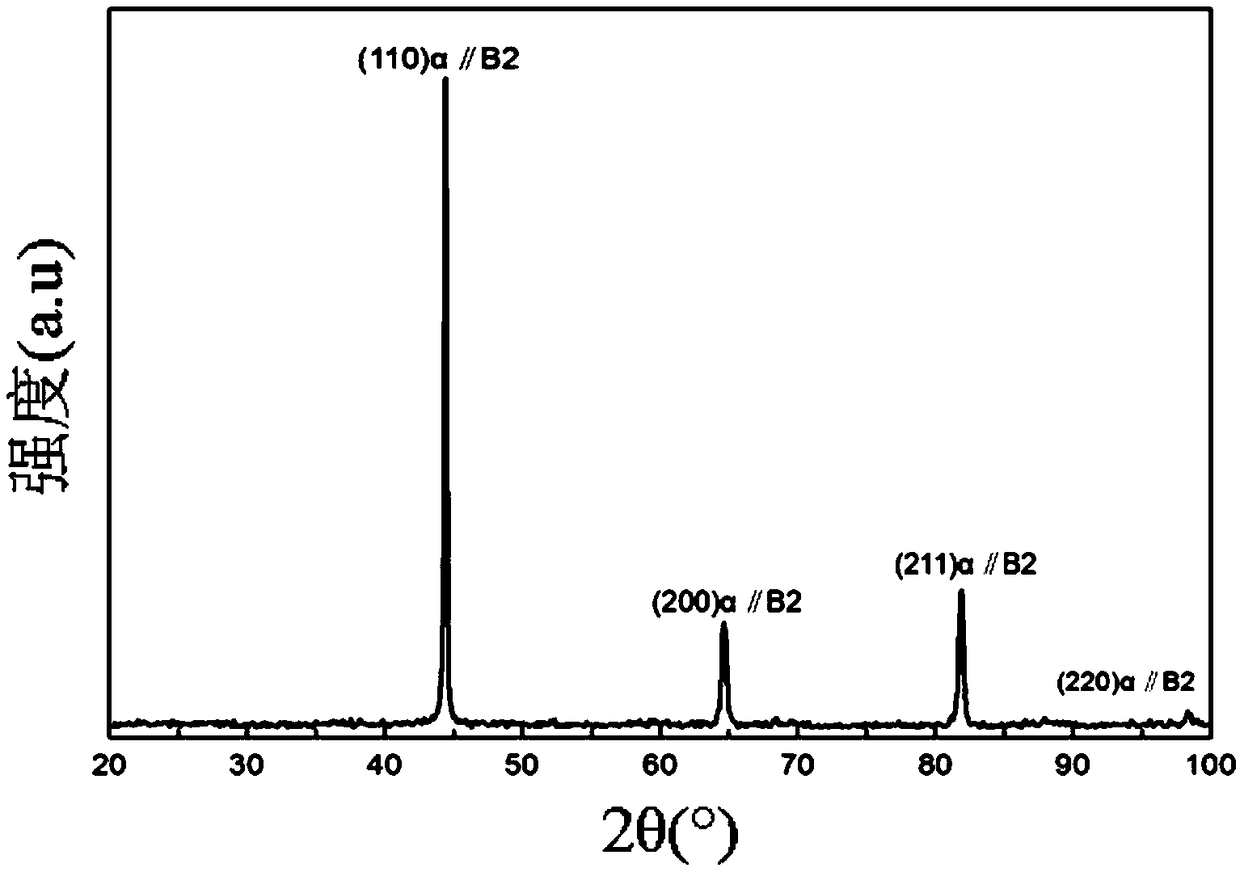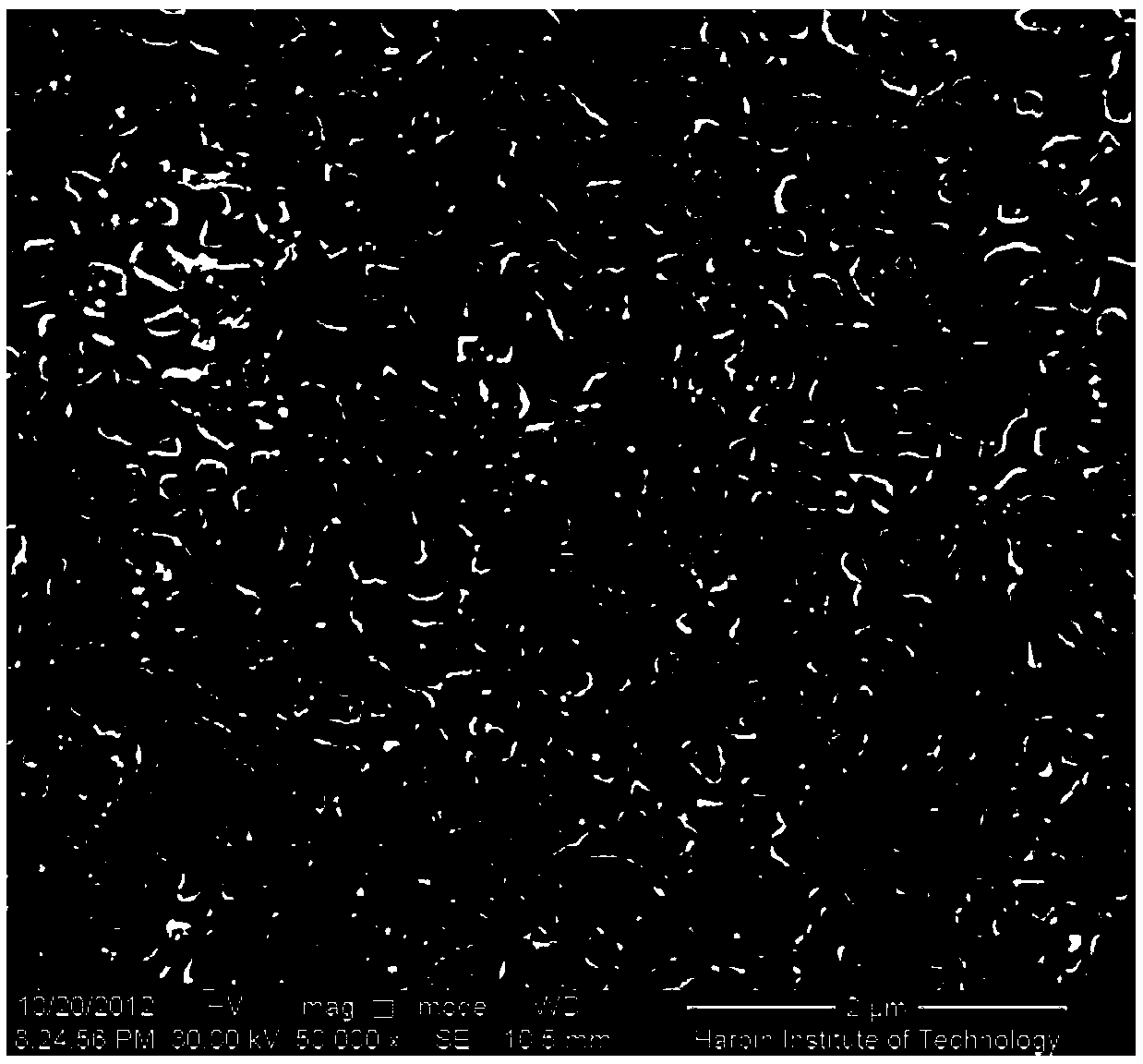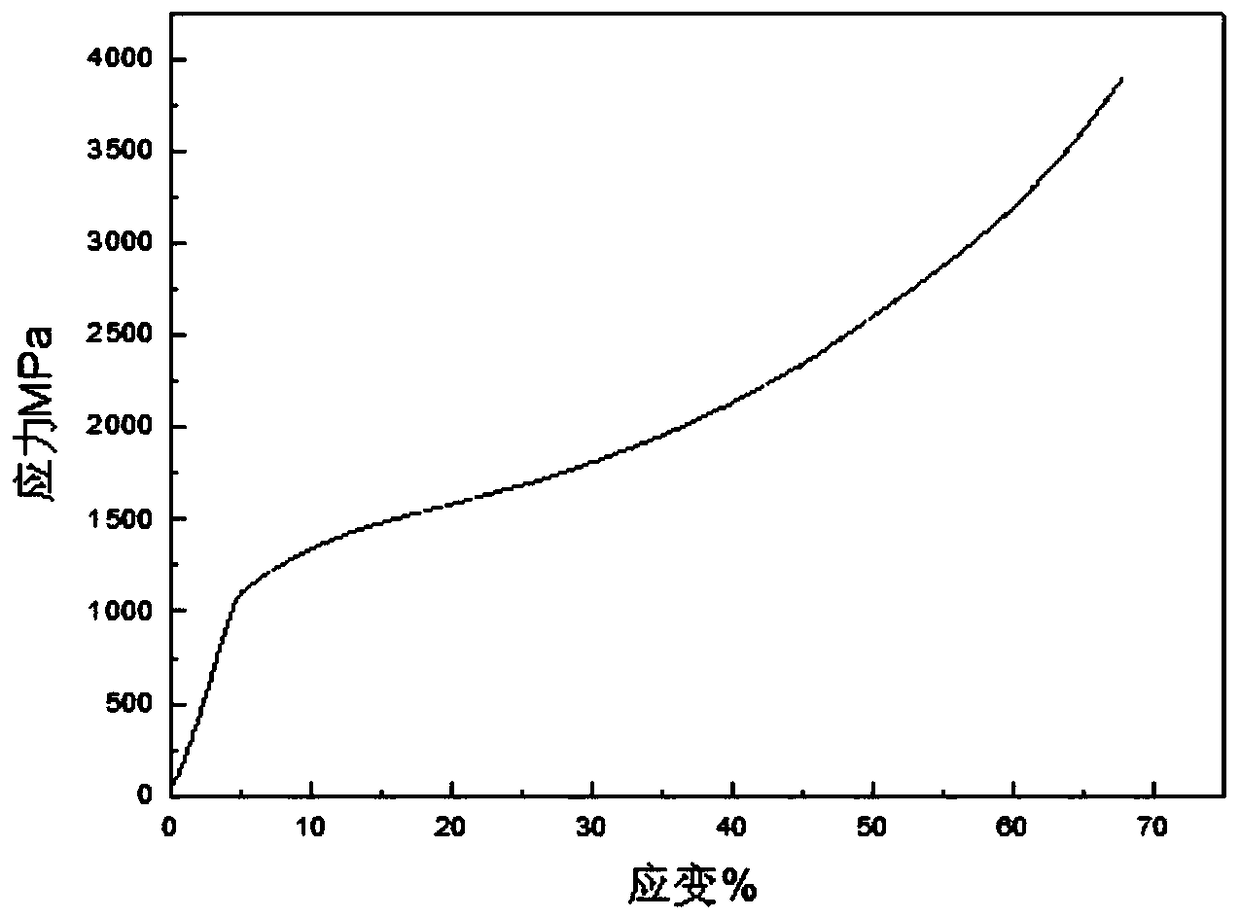Matrix-existing high-entropy alloy and preparation method thereof
A high-entropy alloy and alloy matrix technology, applied in the field of high-entropy alloys and their preparation, can solve the problems of poor mechanical properties of high-entropy alloys, poor intermetallic compound phases and plasticity, etc., achieve high-plastic comprehensive mechanical properties, and have broad application prospects , the effect of excellent comprehensive mechanical properties
- Summary
- Abstract
- Description
- Claims
- Application Information
AI Technical Summary
Problems solved by technology
Method used
Image
Examples
specific Embodiment approach 1
[0030] Specific Embodiment 1: In this embodiment, a base-based high-entropy alloy is prepared by mass percentage from 50% to 90% alloy matrix and 10% to 50% alloying elements; the alloy matrix is Fe, Al, One or two elements of Cr, Ni, Co, Cu, Ti, Mn, Mo, Zr, Hf, Nb and Sn; the alloying elements are Fe, Al, Cr, Ni, Co, Cu , Ti, Mn, Mo, Zr, Hf, Nb and Sn, or two or more elements; when the alloy matrix is two elements, the molar ratio between the two elements is b, b The value range is 0.5≤b≤2; the molar ratio between any two elements in the alloying elements is a, and a satisfies: 0.8≤a≤1.25.
specific Embodiment approach 2
[0031] Specific embodiment two: This embodiment is a preparation method of a base-based high-entropy alloy, which is completed according to the following steps:
[0032] 1. Prepare raw materials:
[0033] Weighing 50% to 90% of the alloy matrix and 10% to 50% of the alloying elements according to the mass percentage to obtain the raw material of the base-based high-entropy alloy;
[0034] The alloy matrix described in step 1 is one or two elements in Fe, Al, Cr, Ni, Co, Cu, Ti, Mn, Mo, Zr, Hf, Nb and Sn;
[0035] The alloying elements described in step 1 are two or more elements of Fe, Al, Cr, Ni, Co, Cu, Ti, Mn, Mo, Zr, Hf, Nb and Sn;
[0036] When the alloy matrix described in step 1 consists of two elements, the molar ratio between the two elements is b, and the range of b is 0.5≤b≤2;
[0037] The molar ratio between any two elements of the alloying elements described in step 1 is a, and the value range of a is 0.8≤a≤1.25.
[0038] 2. Melting the base-based high-entropy ...
specific Embodiment approach 3
[0046] Specific embodiment three: the difference between this embodiment and specific embodiment two is: the arc melting method described in step two is completed according to the following steps:
[0047] 1. The raw materials of the base-based high-entropy alloy weighed in step 1 are successively added to the copper mold crucible in the non-consumable vacuum arc melting furnace according to the order of material melting point from low to high;
[0048] ②. Vacuumize the non-consumable vacuum arc melting furnace until the vacuum degree of the non-consumable vacuum arc melting furnace is lower than 1.0×10 -3 MPa, and then fill the non-consumable vacuum arc melting furnace with argon until the pressure in the non-consumable vacuum arc melting furnace is 0.05MPa;
[0049] ③. Repeat step ② for 3 to 5 times;
[0050] ④. Repeatedly smelting the base-based high-entropy alloy raw materials for 5 to 6 times at a melting current of 250A-400A, each melting time is 2min-5min, and cooling ...
PUM
| Property | Measurement | Unit |
|---|---|---|
| yield strength | aaaaa | aaaaa |
| breaking strength | aaaaa | aaaaa |
| compressive yield strength | aaaaa | aaaaa |
Abstract
Description
Claims
Application Information
 Login to View More
Login to View More - R&D
- Intellectual Property
- Life Sciences
- Materials
- Tech Scout
- Unparalleled Data Quality
- Higher Quality Content
- 60% Fewer Hallucinations
Browse by: Latest US Patents, China's latest patents, Technical Efficacy Thesaurus, Application Domain, Technology Topic, Popular Technical Reports.
© 2025 PatSnap. All rights reserved.Legal|Privacy policy|Modern Slavery Act Transparency Statement|Sitemap|About US| Contact US: help@patsnap.com



